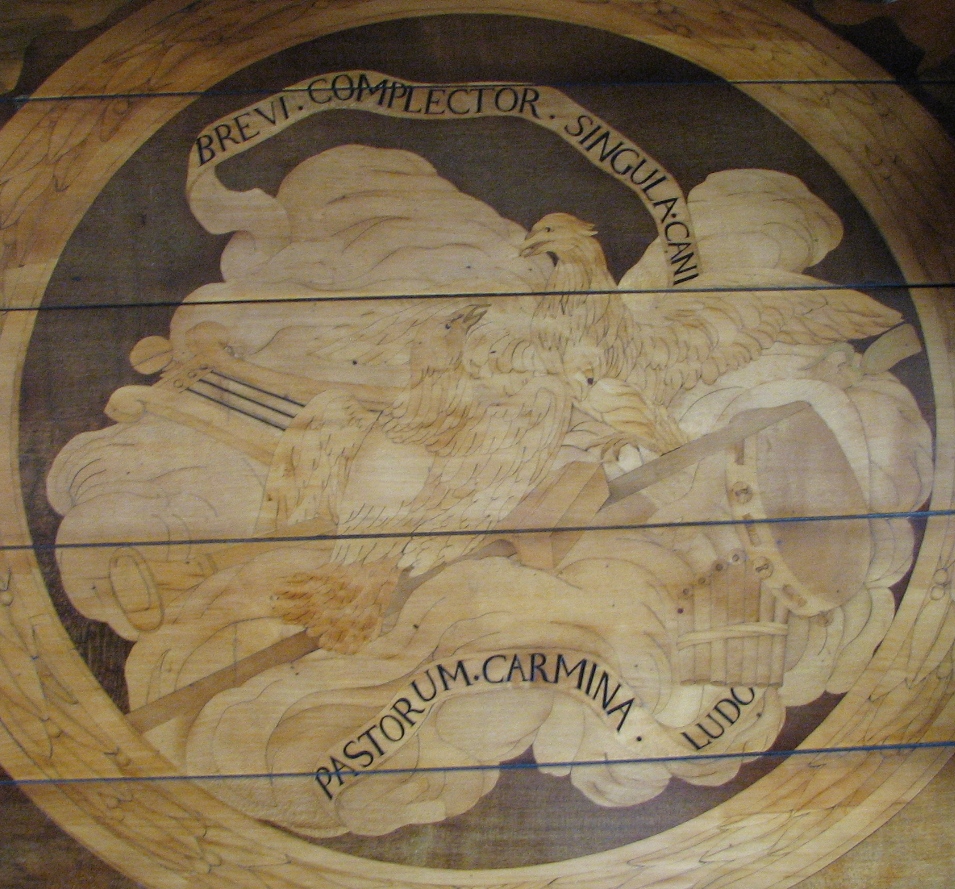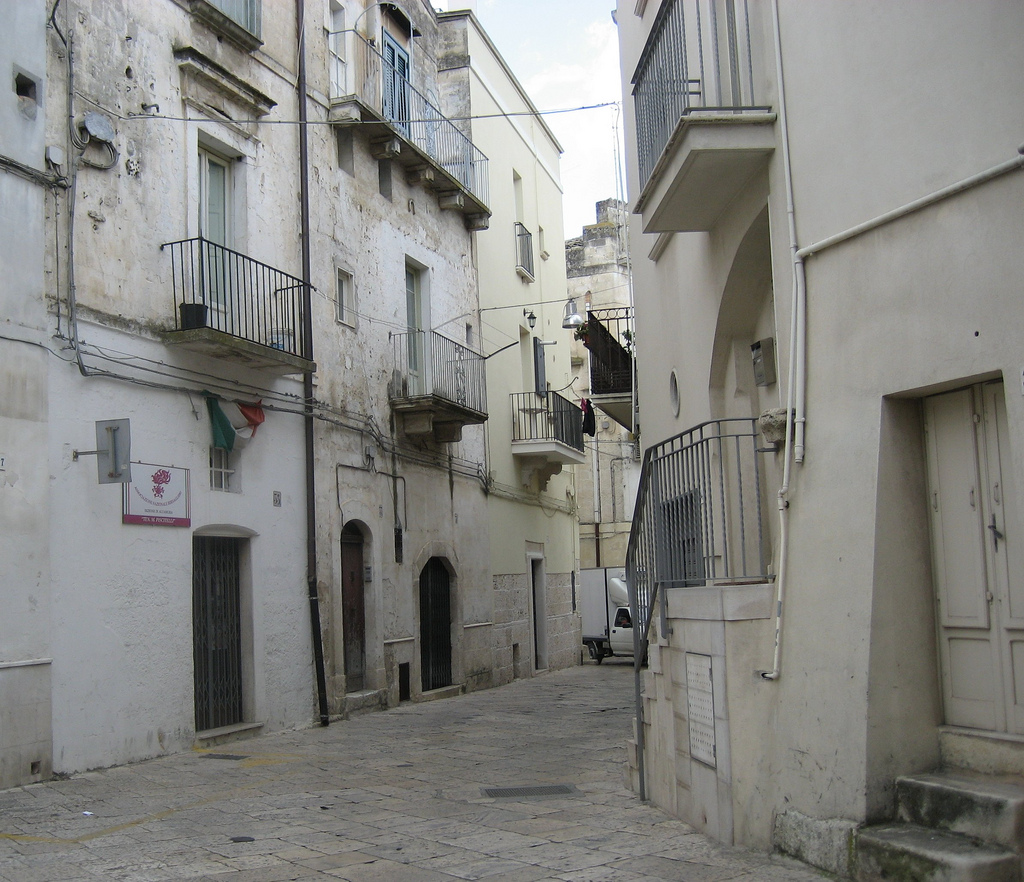|
Cesare Orlandi
Cesare Orlandi (Città della Pieve, 26 luglio 1734 – Perugia, 20 dicembre 1779) was an Italian writer and historian. He was a nobleman of Fermo, Atri and Città della Pieve, and he's known only for his work ''Delle città d'Italia e sue isole adjacenti iccompendiose notizie'' (1770-1778), which contains comprehensive details and high-quality landscape views of many Italian cities (a landscape view is attached at the beginning of each section and for each city). It was published in volumes over almost a decade (1770-1778). He is likely to be the "Abatte Cesare Orlandi" who edited and published an edition of Cesare Ripa's "Iconology" in 1764, which contains a portrait. His work remained unfinished due to the author's death, occurred in 1779, and the Italian cities covered in his work span from letter A (Volume I) to letter C (Volume V C. Orlandi - Volume V). The work is often a valuable source of information about the structure, architecture, history and social organization of ma ... [...More Info...] [...Related Items...] OR: [Wikipedia] [Google] [Baidu] |
Città Della Pieve
Città della Pieve is a ''comune'' (municipality) in the Province of Perugia in the Italian region Umbria, located in Valdichiana a few kilometres from the border between Umbria and Tuscany, and about southwest of Perugia and southeast of Chiusi in Tuscany. Etruscan tombs have been found in the neighbourhood, but it is not certain that the present town stands on an ancient site. It was the birthplace of the painters Pietro Vannucci (Perugino), possessing several of his works, and Niccolò Circignani. Città della Pieve borders the following municipalities: Allerona, Castiglione del Lago, Fabro, Monteleone d'Orvieto, Paciano, Piegaro in Umbria, and Cetona, Chiusi and San Casciano dei Bagni in Tuscany. History The origins of Città della Pieve are still unknown today. Before becoming a Christian city it certainly had another name (as Guiducci says in his "Historical briefing of Città della Pieve of 1686): Monte di Apollo, Castelforte di Chiuscio, Salepio or Castrum Salepia. In ... [...More Info...] [...Related Items...] OR: [Wikipedia] [Google] [Baidu] |
Perugia
Perugia (, , ; lat, Perusia) is the capital city of Umbria in central Italy, crossed by the River Tiber, and of the province of Perugia. The city is located about north of Rome and southeast of Florence. It covers a high hilltop and part of the valleys around the area. The region of Umbria is bordered by Tuscany, Lazio, and Marche. The history of Perugia goes back to the Etruscan period; Perugia was one of the main Etruscan cities. The city is also known as the University, universities town, with the University of Perugia founded in 1308 (about 34,000 students), the University for Foreigners Perugia, University for Foreigners (5,000 students), and some smaller colleges such as the Academy of Fine Arts "Pietro Vannucci" ( it, Accademia di Belle Arti "Pietro Vannucci") public athenaeum founded in 1573, the Perugia University Institute of Linguistic Mediation for translators and interpreters, the Music Conservatory of Perugia, founded in 1788, and other institutes. Perugia ... [...More Info...] [...Related Items...] OR: [Wikipedia] [Google] [Baidu] |
Fermo
Fermo (ancient: Firmum Picenum) is a town and ''comune'' of the Marche, Italy, in the Province of Fermo. Fermo is on a hill, the Sabulo, elevation , on a branch from Porto San Giorgio on the Adriatic coast railway. History The oldest human remains from the area are funerary remains from the 9th–8th centuries BC, belonging to the Villanovan culture or the proto-Etruscan civilization. The ancient Firmum Picenum was founded as a Latin colony, consisting of 6000 men, in 264 BC, after the conquest of the Picentes, as the local headquarters of the Roman power, to which it remained faithful. It was originally governed by five quaestors. It was made a colony with full rights after the battle of Philippi, the 4th Legion being settled there. It lay at the junction of roads to Pausulae, Urbs Salvia, and Asculum, connected to the coast road by a short branch road from Castellum Firmanum (Porto S. Giorgio). According to Plutarch's ''Parallel Lives'', Cato the Elder thought highly ... [...More Info...] [...Related Items...] OR: [Wikipedia] [Google] [Baidu] |
Atri, Abruzzo
Atri ( ; Latin: Adria, Atria, Hadria, or Hatria) is a ''comune'' in the Province of Teramo in the Abruzzo region of Italy. Atri is the setting of the poem '' The Bell of Atri'' by American writer Henry Wadsworth Longfellow. Its name is the origin of the name of the Emperor Hadrian. History Ancient Adria was a city of Picenum, situated about from the Adriatic Sea, between the rivers Vomanus (modern Vomano) and Matrinus (modern Piomba). According to the Antonine Itinerary, it was distant 15 Roman miles from Castrum Novum (modern Giulianova) and 14 from Teate (modern Chieti). It has been supposed, with much probability, to be of Etruscan origin, and a colony from the more celebrated city of the name, now Adria in the Veneto region, though there is no historical evidence of the fact. The first certain historical notice of Adria is the establishment of a Roman colony there about 282 BCE. In the early part of the Second Punic War (217 BCE) its territory was ravaged by Hannibal; but n ... [...More Info...] [...Related Items...] OR: [Wikipedia] [Google] [Baidu] |
Cesare Ripa
Cesare Ripa (c. 1555, Perugia – Rome) was an Italian iconographer who worked for Cardinal Anton Maria Salviati as a cook and butler. Life Little is known about his life. He was born of humble origin in Perugia about 1555. The exact date of his birth has never been established. He was very active in academic circles as member of the Filomati and the Intronati in Siena, both dedicated to the study of antiquities and of Greek and Latin literature, and the Insensati in his native Perugia. While still very young he went to Rome to work at the court of Cardinal Antonio Maria Salviati. He attended the Accademia degli Incitati the Accademia di San Luca, where he probably met the Dominican mathematician Ignazio Danti, and was introduced into the learned circles of Baroque Rome. In 1593 he published the first edition (without illustrations) of his ''Iconologia''; the work was highly successful, and went through several editions and subsequent translations. In 1598 Ripa was knighted ... [...More Info...] [...Related Items...] OR: [Wikipedia] [Google] [Baidu] |
Altamura Illustration 1770
Altamura (, ; nap, label= Barese, Ialtamùre) is a town and ''comune'' of Apulia, in southern Italy. It is located on one of the hills of the Murge plateau in the Metropolitan City of Bari, southwest of Bari, close to the border with Basilicata. , its population amounts to 70,595 inhabitants. The city is known for its particular quality of bread called Pane di Altamura, which is sold in numerous other Italian cities. The 130,000-year-old calcified Altamura Man was discovered in 1993 in the nearby limestone cave called ''grotta di Lamalunga''. History The area of modern Altamura was densely inhabited in the Bronze Age (La Croce settlement and necropolis). The region contains some fifty tumuli. Between the 6th and the 3rd century BC a massive line of megalithic walls was erected, traces of which are still visible in some areas of the city. Ancient city The city was inhabited until around the tenth century AD. Then it was reportedly looted by Saracens. There are no reliab ... [...More Info...] [...Related Items...] OR: [Wikipedia] [Google] [Baidu] |
1734 Births
Events January– March * January 8 – Salzburgers, Lutherans who were expelled by the Roman Catholic Bishop of Salzburg, Austria, in October 1731, set sail for the British Colony of Georgia in America. * February 16 – The Ostend Company, established in 1722 in the Austrian Netherlands (modern-day Belgium) to compete for trade in the West Indies (the Caribbean islands) and the East Indies (south and southeast Asia), ceases business as part of the agreement by Austria in the Second Treaty of Vienna. * March 12 – Salzburgers arrive at the mouth of the Savannah River in the British Colony of Georgia. April–June * April 25 – Easter occurs on the latest possible date (the next time is in 1886). * May 15 – Prince Charles of Spain (later King Charles III) becomes the new King of Naples and Sicily, five days after his arrival in Naples. * May 25 – Spanish forces under the command of José Carrillo de Albornoz, 1st Duke of Mo ... [...More Info...] [...Related Items...] OR: [Wikipedia] [Google] [Baidu] |
1779 Deaths
Events January–March * January 11 – British troops surrender to the Marathas in Wadgaon, India, and are forced to return all territories acquired since 1773. * January 11 – Ching-Thang Khomba is crowned King of Manipur. * January 22 – American Revolutionary War – Claudius Smith is hanged at Goshen, Orange County, New York for supposed acts of terrorism upon the people of the surrounding communities. * January 29 – After a second petition for partition from its residents, the North Carolina General Assembly abolishes Bute County, North Carolina (established 1764) by dividing it and naming the northern portion Warren County (for Revolutionary War hero Joseph Warren), the southern portion Franklin County (for Benjamin Franklin). The General Assembly also establishes Warrenton (also named for Joseph Warren) to be the seat of Warren County, and Louisburg (named for Louis XVI of France) to be the seat of Franklin County. * Februar ... [...More Info...] [...Related Items...] OR: [Wikipedia] [Google] [Baidu] |
18th-century Italian Writers
The 18th century lasted from January 1, 1701 ( MDCCI) to December 31, 1800 ( MDCCC). During the 18th century, elements of Enlightenment thinking culminated in the American, French, and Haitian Revolutions. During the century, slave trading and human trafficking expanded across the shores of the Atlantic, while declining in Russia, China, and Korea. Revolutions began to challenge the legitimacy of monarchical and aristocratic power structures, including the structures and beliefs that supported slavery. The Industrial Revolution began during mid-century, leading to radical changes in human society and the environment. Western historians have occasionally defined the 18th century otherwise for the purposes of their work. For example, the "short" 18th century may be defined as 1715–1789, denoting the period of time between the death of Louis XIV of France and the start of the French Revolution, with an emphasis on directly interconnected events. To historians who expand ... [...More Info...] [...Related Items...] OR: [Wikipedia] [Google] [Baidu] |
18th-century Italian Male Writers
The 18th century lasted from January 1, 1701 ( MDCCI) to December 31, 1800 ( MDCCC). During the 18th century, elements of Enlightenment thinking culminated in the American, French, and Haitian Revolutions. During the century, slave trading and human trafficking expanded across the shores of the Atlantic, while declining in Russia, China, and Korea. Revolutions began to challenge the legitimacy of monarchical and aristocratic power structures, including the structures and beliefs that supported slavery. The Industrial Revolution began during mid-century, leading to radical changes in human society and the environment. Western historians have occasionally defined the 18th century otherwise for the purposes of their work. For example, the "short" 18th century may be defined as 1715–1789, denoting the period of time between the death of Louis XIV of France and the start of the French Revolution, with an emphasis on directly interconnected events. To historians who expand ... [...More Info...] [...Related Items...] OR: [Wikipedia] [Google] [Baidu] |

.jpg)


.jpg)
